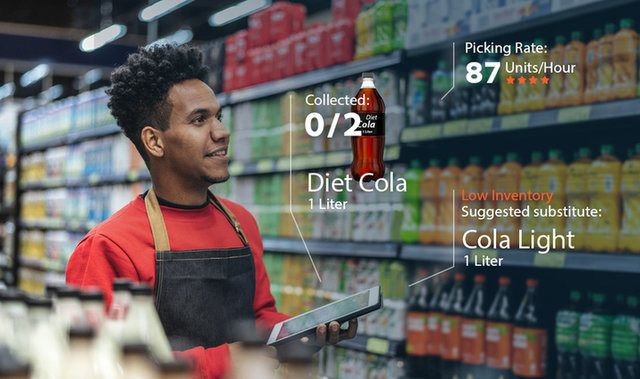
How a Picking App Improves Order Fulfillment for Grocery eCommerce
By Mendel Gniwisch, CEO, Stor.ai
The year 2022 was predicted to have 70% of US shoppers relying on online grocery shopping. That's up from 48% in 2018, with 22% saying they'll buy groceries online at least once a week.
Is your grocery store prepared to fulfill these orders? If not, you'll need a store mapping strategy and the technology to create an efficient order fulfillment system.
Let's explore this further and see how you can prepare your grocery store for online order fulfillment.
Grocers can learn a lot from distribution centers regarding manual picking processes. The picking strategy uses a picking app and an efficient picking strategy
- Mendel Gniwisch, CEO, Stor.ai

The problem: Grocery retailers aren't ready for customer demand
The typical food retailer store is 40,000 sq ft. (compared to 400,000 sq ft distribution centers). Enough space for local shoppers to find what they need.
But tie in the need to fulfill in-store and online orders, and you have a problem—there's not enough space to add more products to fulfill the increased demand. Plus, the aisles aren't large enough for in-store shoppers and pickers.
So implementing order fulfillment, your order pickers will face the following issues:
- Congested aisles and checkouts
- Inventory visibility problems
- Out-of-stocks
- Lack of scalability
But this doesn't mean grocers can't find solutions to make it work. It requires using a picking app and efficient order picking methods to improve fulfillment processes.
We'll get into that next.
The Solution: Picking apps and order batching
Grocers can learn a lot from distribution centers regarding manual picking processes. The picking strategy uses a picking app and an efficient picking strategy.
This may include a picking process, such as the following.

Cluster order picking: Cluster order picking, or order batch picking, is when the picker selects items to fulfill multiple orders at once. This reduces the number of trips around the store and travel time. The idea of batch picking is to maximize cart fill rates and minimize travel time for each cart.
Zone-based picking: Zone-based picking separates sections of the store into zones where designated pickers work. For instance, having a picker in the freezer zone picking 10-20 orders at once. You'll need a well-defined process to ensure products are assigned to the correct order, merge from each zone properly and compile into complete orders.
Two-stage picking: Two-stage picking works for products which are ordered multiple times per day. It works by having pickers pre-select and gather these products, and later when orders come in for these items, they only have to pick the other slow-moving items on the list. It saves time by assembling products in advance.
Now, if space becomes an issue, then look into purchasing dark stores.
How to create an efficient picking process
It's time to build a better picking process – where do you begin? You can start with adopting a picking app to simplify order fulfillment.
From here, you can employ one of the warehouse strategies above to meet the increased demand from customers – specific to your personal needs.
Gain a competitive edge with an AI picking app
As more grocers adopt e-commerce, it'll become more challenging to compete in the market. Customers demand convenience. One way to offer this is to provide order fulfillment services. This includes offering last-mile delivery and curbside pickup.
With a picking app fueled by artificial intelligence, grocers can enhance their customer experience and e-commerce strategies. This is why grocers use stor.ai to gain a competitive edge





Luc Filiatreault is the CEO of mdf commerce, a company providing eprocurement and unified commerce B2B SaaS solutions to optimize and accelerate commercial interactions between buyers and sellers, servicing over 600 clients in eCommerce alone. Luc has founded and/or led seven businesses in technology, IT and aerospace, completed two IPOs, and raised multiple levels of funding totaling over 200 M$ from Canadian and US venture capitals, as well as institutional investors.